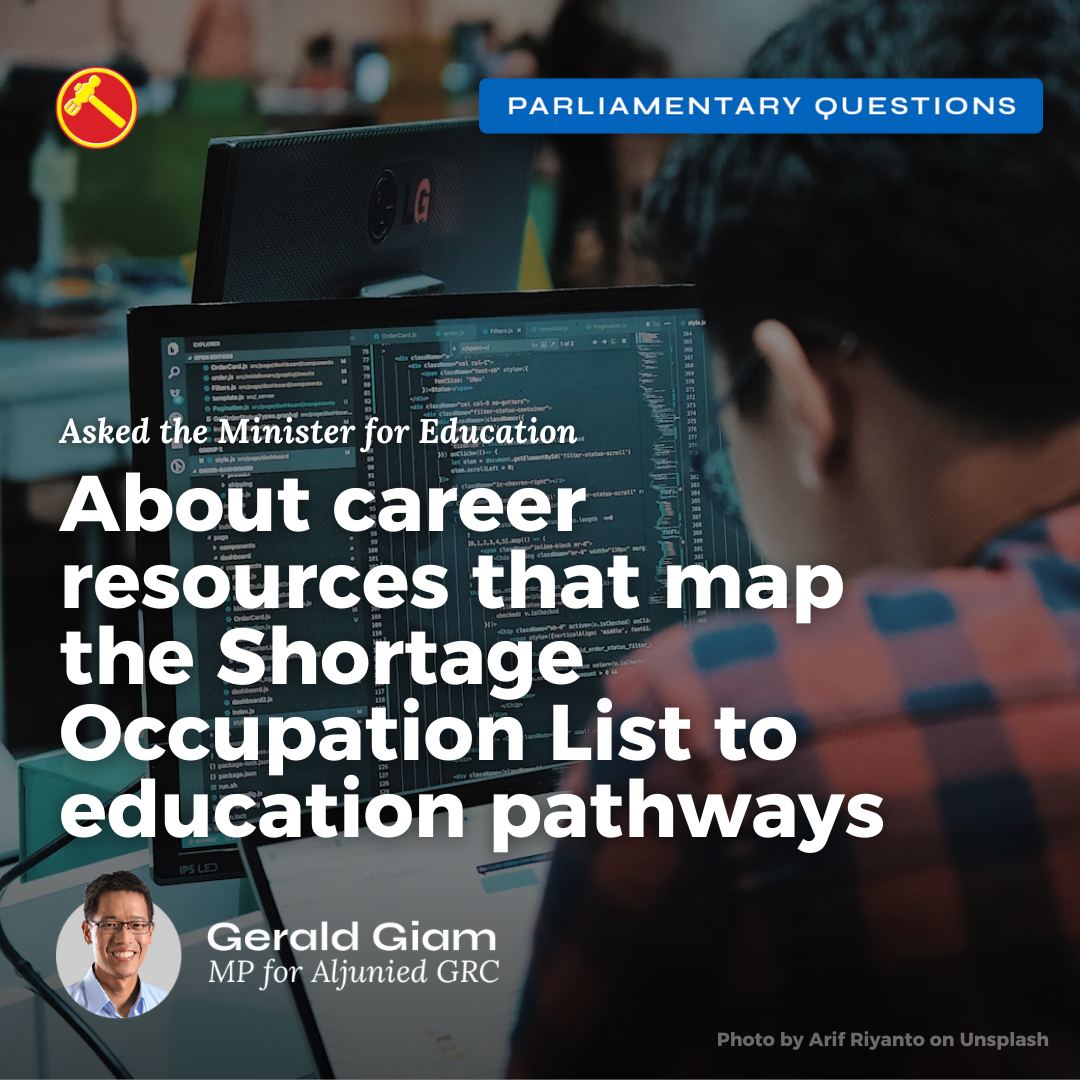In the parliamentary session in May 2024, I asked Minister for Education Chan Chun Sing about how schools are aligning educational pathways with Singapore’s workforce needs. My questions were driven by a concern that educational and career guidance in our schools is not sufficiently tied to the actual demands of our nation’s economy.
I asked if the Ministry of Education (MOE) would:
1. Develop resources that map the Ministry of Manpower’s (MOM) Shortage Occupation List (SOL) to relevant educational pathways;
2. Provide targeted counselling to students and their parents that connects identified skill shortages with appropriate courses of study;
3. Organise systematic industry outreach to schools that focuses on in-demand jobs and the qualifications they require; and
4. Ensure that such career information is accessible to less-privileged families, ensuring equity in educational and career opportunities.
These measures are intended to make career guidance more proactive, precise and inclusive, equipping students and their families with the tools needed for informed decision-making.
In response, the Minister highlighted the existing efforts, including industry immersion programmes, learning journeys, career talks and the MyCareersFuture portal. He noted the importance of guiding students towards in-demand careers but also emphasized the need to respect students’ personal preferences in choosing their educational paths.
While I appreciate the existing resources mentioned by the Minister, I believe there is a need for a more direct and structured approach. There is a potential disconnect between the skills shortages identified by MOM and the career guidance provided to students. My proposals aimed to bridge this gap more effectively and ensure that all students, regardless of their background, have access to the information necessary to navigate their future careers successfully.
While respecting individual choice is paramount, it does not preclude providing students comprehensive, relevant and actionable information to enable them to align their personal ambitions with broader economic opportunities.
By integrating real-time labour data into our educational planning and guidance to students, we can optimise both educational investments and labour market outcomes, and better prepare our youth for the dynamic demands of the future workforce.
This was my full question and the Minister’s answer on 8 May 2024:
STUDENT- AND PARENT-FRIENDLY CAREER RESOURCES AND COUNSELLING THAT MAP SHORTAGE OCCUPATION LIST TO EDUCATION PATHWAYS
Mr Gerald Giam Yean Song asked the Minister for Education whether the Ministry will (i) work with the Ministry of Manpower (MOM) to develop student and parent-friendly career resources which map MOM’s Shortage Occupation List to the relevant education pathways (ii) provide counselling to link skills shortages to suitable courses of study (iii) organise industry outreaches to schools to highlight in-demand jobs and the required qualifications and (iv) ensure that such career information is accessible to less-privileged families.
Mr Chan Chun Sing: Schools and Institutes of Higher Learning (IHLs) prepare students for a wide range of careers across all sectors. Students, including those from less privileged families, have opportunities to attend industry immersion programmes, learning journeys and career talks, to learn more about the different career pathways available. Information on career opportunities in the various sectors is also available on the MyCareersFuture portal.
Whilst we have an interest to steer more students towards courses that prepare them for in-demand careers such as those in MOM’s Shortage Occupation List, we need to understand and respect that students have their personal considerations and preferences in choosing their course of study.
Source: Singapore Parliament Hansard
